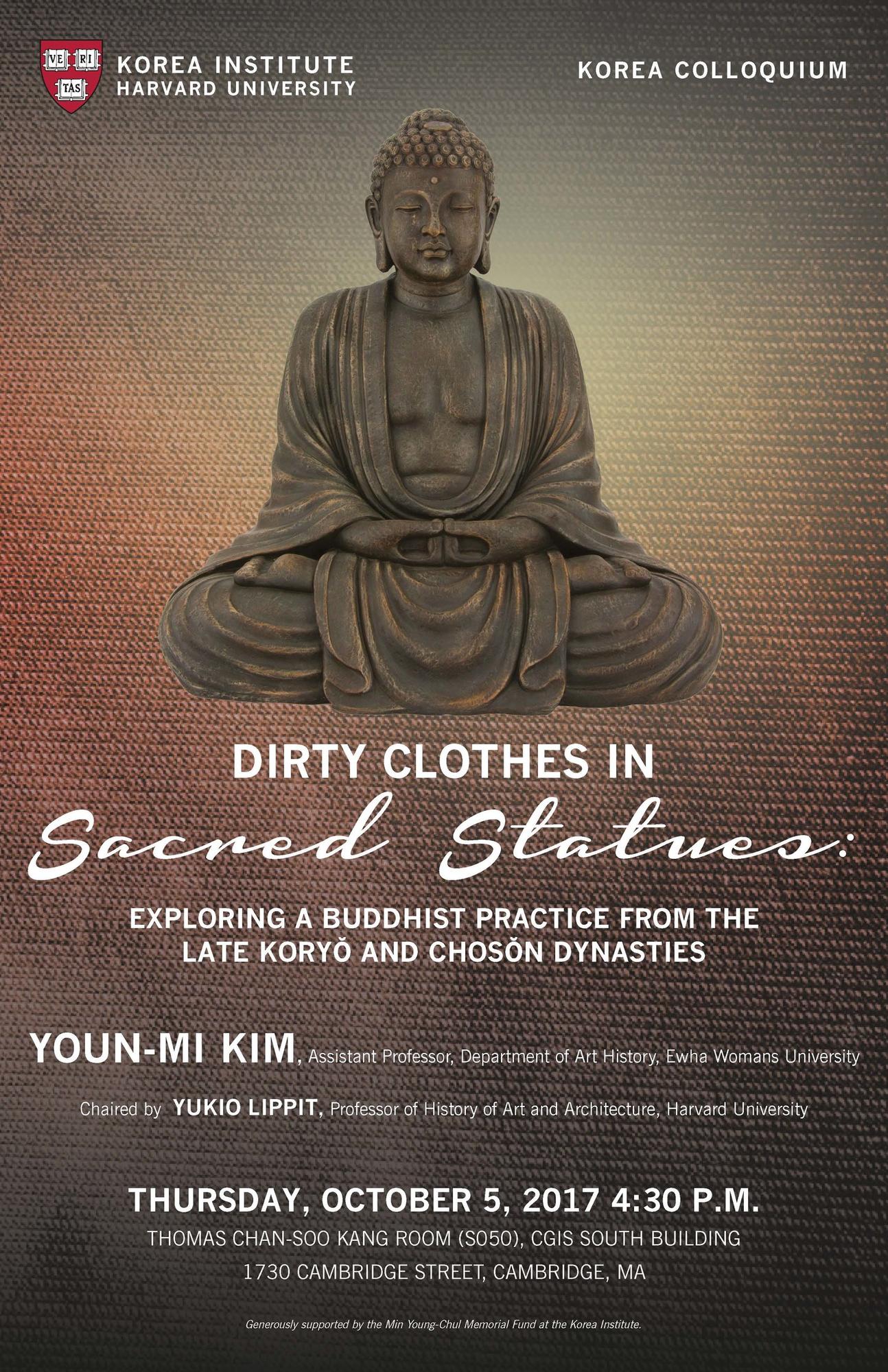Date:
Location:
Korea Colloquium
Youn-mi Kim
Assistant Professor, Department of Art History, Ewha Womans University
Chaired by Yukio Lippit, Professor of History of Art and Architecture, Harvard University
Abstract:
Ever since Korean scholars began systematically examining the inner space of Buddhist statues a few decades ago, many articles of clothing have been found, usually showing signs of heavy wear. Korean Buddhist tradition had a unique practice of enshrining used human clothing in sacred statues. Why did this peculiar practice developed in the late Koryŏ and Chosŏn dynasty? Although other cultures in Asia enshrined various sacred relics in newly produced Buddhist statues to instill life into them, none used human clothing. Korean scholars have only studied such articles to trace the history of clothing and textiles, but the religious function and psychological grounds of this unique practice have received little scholarly attention. Adopting anthropological and cross-cultural approaches, this paper argues that human clothing was enshrined in sacred statues as a substitute for the donor’s body. In Korean culture, which views fragments of human bodies as inauspicious, Buddhists did not enshrine hair or nails in such statues, unlike other Asian countries. As a stand-in for the donor’s body, the used clothing also served as a medium to convey the donor’s prayers to the deities and thus frequently was inscribed with the donor’s wishes. While broadly exploring the meaning and function of clothing encased in Buddhist statues, this paper also offers an in-depth analysis of the stained traditional jacket that was found in 1984 inside the Mañjuśrī statue (1466) on Mount Odae in Kangwŏn Province. Since its discovery, this jacket with strange red and yellow stains was linked to the legend of King Sejo’s (r. 1455-14680) encounter with Mañjuśrī bodhisattva. This paper shows that the stained clothing, whose donor was a daughter of King Sejo, is not proof of such legend but rather a material agent that gave rise to such legend in the late Chosŏn period.
Generously supported by the Min Young-Chul Memorial Fund at the Korea Institute.